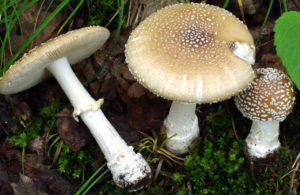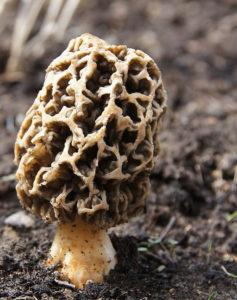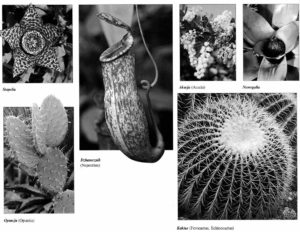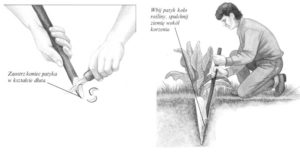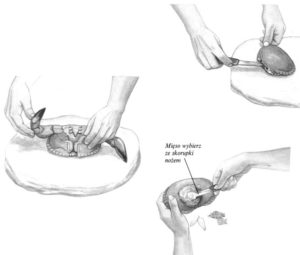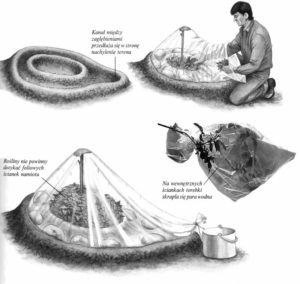Można przyjąć, że roślina o trujących korzeniach ma również trujące liście, łodygę, kwiaty i sok. Takim przykładem jest ziarnopłon, którego wystarczy dotknąć, by na skórze pojawiły się bąble. Są jednak wyjątki od tej reguły. Korzenie i kłącza niektórych roślin, śmiertelnie trujące na surowo, stają się
jadalne po ugotowaniu. Jeśli nie jesteś do końca pewny, czy prawidłowo rozpoznałeś daną roślinę, nie jedz jej.
Rośliny o trujących korzeniach
Maniok (Manihot)
Bulwy korzeniowe tej rośliny na surowo są śmiertelnie trujące. Przed spożyciem muszą być przez 48 godzin moczone w wodzie, a potem ugotowane.
Narcyz trąbkowy (Narcissus)
Zwany nieprawidłowo żonkilem, można go łatwo poznać po żółtych kwiatach trąbkowych. Jeśli nie ma kwiatu, lepiej nie dotykać rośliny.
Czermień błotna (Calla)
Zwana też kallą, ma bardzo charakterystyczne kwiaty. Są to właściwie kolby kwiatostanowe od wewnątrz białe, od zewnątrz zielone. Rośnie w leśnych bagnach Eurazji i Ameryki Północnej. Korzenie tej rośliny można jeść lub ucierać na mąkę (patrz s. 92), ale trzeba przedtem ugotować. Na surowo są bowiem trujące. Pozostałe części rośliny zawierają toksyny.
Kolokazja (Colocasia)
Rośnie na wilgotnych terenach w całej strefie między zwrotnikowej. Osiąga 1,5 m wysokości, ma podłużne liście i żółto-pomarańczowe kwiaty. Jej wielkie bulwy są trujące na surowo, natomiast po ugotowaniu nadają się do jedzenia; smakiem przypominają ziemniaki.
Pochrzyn (Dioscorea)
Uprawiany na obszarach podzwrotnikowych i międzyzwrotnikowych ze względu na jadalne bulwy. Niektóre gatunki mają jednak bulwy trujące, gdy się je spożywa na surowo. Ponieważ trudno odróżnić je od pozostałych, najlepiej zawsze je obrać i ugotować. Roślina ma duże sercowate liście, rośnie często przy pniach drzew.
Ciemiężyk białokwiatowy (Cynanchum vincetoxicum)
Ma ostro zakończone, sercowate liście i małe kwiaty. Zjedzone – korzenie oraz strąki wywołują wymioty, a co za tym idzie – utratę wody przez organizm. Również sok mleczny tej rośliny jest toksyczny. Występuje w krajach strefy umiarkowanej.
Śniedek (Ornithogalum)
Ta roślina klimatu umiarkowanego osiąga 30 cm wysokości. Jej cebulki nadają się do jedzenia, ale wyłącznie po ugotowaniu. Inne części rośliny są niejadalne.
INNE TRUJĄCE KORZENIE
Bulwy dzikich ziemniaków (Solanum) nadają się do jedzenia, ale wyłącznie po ugotowaniu. Natomiast podobne do pomidorów owoce ziemniaka są trujące. Dzikie pomidory (Lycopersicon), których owoce są jadalne, wyglądem przypominają tak bardzo owoce ziemniaka, że lepiej unikać i jednych, i drugich. Zygadenus (Zigadenus) ma cebulki bardzo podobne do cebuli, ale jest śmiertelnie trujący. Śmiertelnie trujące są też podziemne części jaskra (Ranunculus), jak również bulwiaste kłącze szaleju jadowitego, zwanego też cykutą (Cicuta).
Bardzo trudno jest odróżnić trujące korzenie, kłącza i inne części podziemne roślin od jadalnych, dlatego lepiej w ogóle unikać ich jedzenia.

.jpg)
